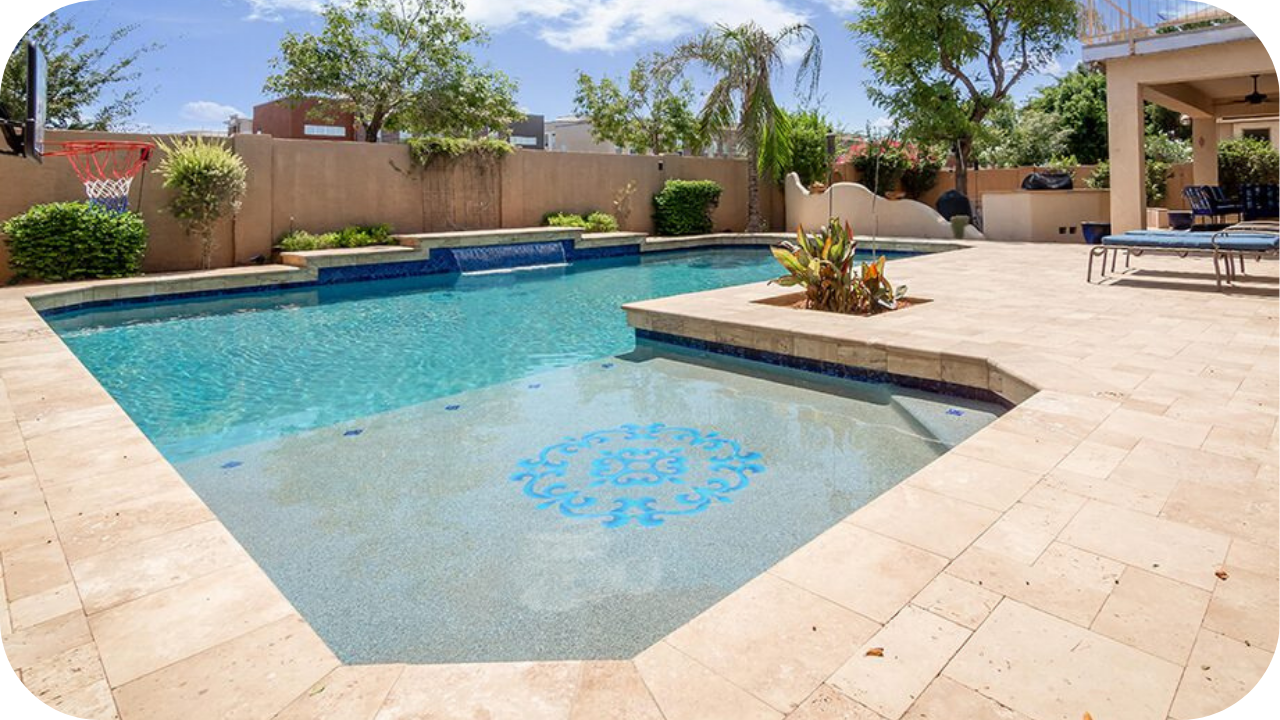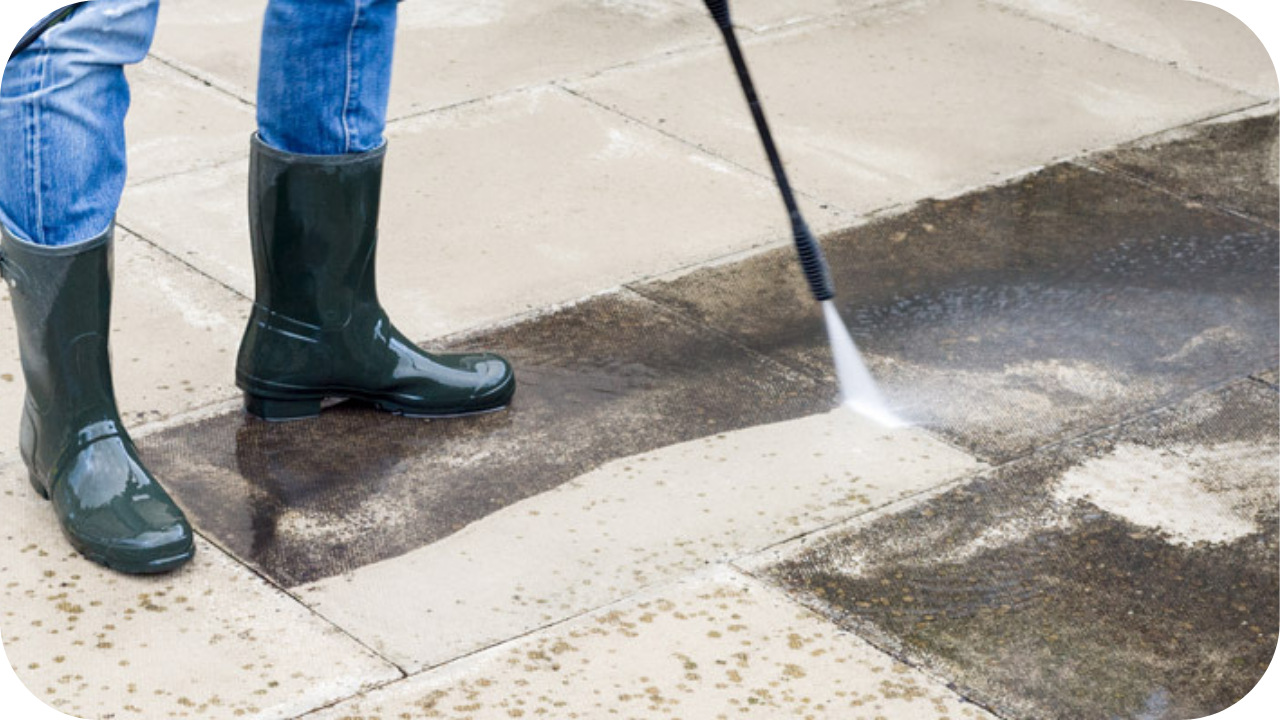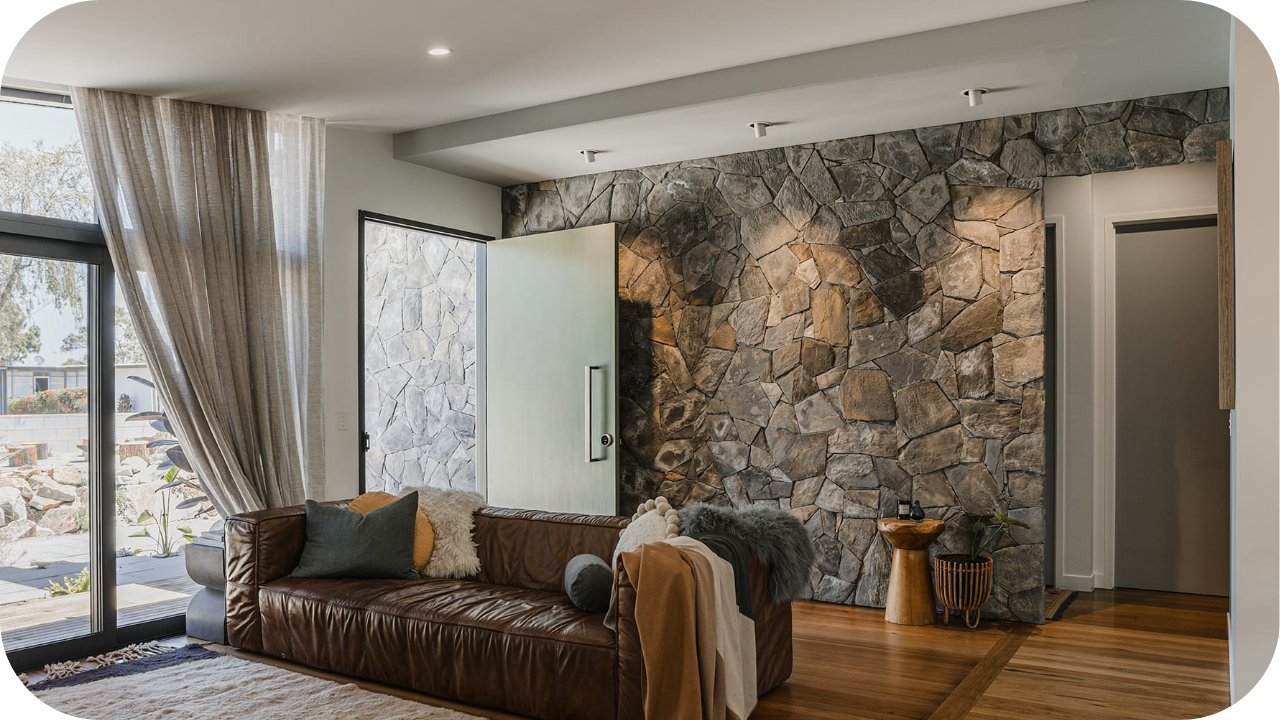
Choosing the right stone for your pool deck is about more than just looks. It is about comfort, safety, and longevity.
The material you select for your pool deck plays a crucial role in both the design and functionality of your outdoor space. Travertine is a popular choice for pool decking due to its natural beauty, durability, and comfort underfoot.
In this article, we will discuss the benefits of travertine, compare it to other materials, and provide installation and maintenance tips to help you determine if it is the best choice for your pool area.
Is Travertine the Best Stone for Pool Decking?
Yes, travertine is one of the best choices for pool decking due to its durability, porous structure, and natural cooling properties. Unlike other stones, it stays comfortable underfoot even in direct sunlight. Its timeless appeal and low maintenance requirements make it a practical and beautiful option for pool areas.
Key Benefits of Travertine for Pool Decking
Travertine combines beauty, functionality, and durability. Here are the key reasons why it continues to be a top choice for pool decking, enhancing both the appearance and performance of your outdoor space.
1. Naturally Resistant to Water and Moisture Damage
Travertine’s porous surface allows water to drain effectively, preventing pooling around pool decks. When sealed, it resists moisture absorption, ensuring the decking remains durable and stable in wet conditions, making it ideal for poolside areas exposed to frequent splashes and moisture.
2. Stays Cool Underfoot for Barefoot Comfort
Travertine reflects heat, remaining cool to the touch even in direct sunlight. Its heat-resistant properties make it perfect for barefoot comfort during hot summer months, ensuring your pool deck is always comfortable for relaxed outdoor living.
3. Delivers Timeless Aesthetic Appeal for Pool Areas
With warm, earthy tones and unique textures, travertine complements any outdoor design. Available in a range of finishes, it suits both traditional and modern poolside settings, adding timeless beauty and sophistication to your outdoor space.
4. Provides Durability and Weather Resistance for Long-Term Use
Travertine is highly resistant to the damaging effects of chlorine, saltwater, and UV rays. This durability ensures that your pool deck remains intact and visually appealing, even under harsh environmental conditions, for years to come.
5. Requires Low Maintenance for Poolside Surfaces
Travertine is easy to clean and maintain. It resists staining and etching better than other natural stones, and with proper sealing, it requires minimal upkeep, making it a practical and low-maintenance solution for pool decking.
Travertine vs Other Pool Decking Materials
When choosing the right material for your pool deck, it’s essential to compare options based on key attributes. Here’s how travertine measures up against other popular pool decking materials.
| Feature | Travertine | Concrete | Porcelain | Bluestone |
| Durability | Extremely durable, resists cracking and weathering | Durable, but may crack under harsh conditions | Very durable and resistant to staining and fading | Durable, but may chip or weather with time |
| Aesthetic Appeal | Warm, earthy tones and unique textures add natural beauty | Limited in design options, can look industrial | Consistent design, more uniform in appearance | Rugged, deep grey tones, ideal for modern, industrial looks |
| Heat Resistance | Reflects heat, stays cool underfoot | Absorbs heat, can become hot | Tends to stay cooler than some stones but still absorbs heat | Absorbs significant heat, can become uncomfortable in direct sun |
| Maintenance | Low maintenance, requires periodic sealing | Requires regular sealing and maintenance to prevent cracking | Minimal maintenance, easy to clean | Needs sealing to avoid staining and weathering |
| Cost | Moderate to high, based on quality and finish | More affordable, depending on installation method | Moderate to high, based on quality | High, especially for premium grades |
| Longevity | Long-lasting, retains beauty with minimal upkeep | May require more frequent repairs and maintenance | Long-lasting with minimal fading | Long-lasting, but edges may wear over time |
Design Options with Travertine
Choosing the right design for your travertine pool deck can completely transform your outdoor space. Here are the best design options to create a stylish and functional poolside area.
1. Create a French Pattern for Classic Elegance
A French pattern layout combines square and rectangular tiles for a sophisticated look. This timeless design works perfectly for both traditional and modern poolside settings, adding visual movement and a sense of luxury.
2. Opt for Straight Lay for a Clean, Uniform Look
Straight lay patterns provide a clean, simple appearance, ideal for contemporary pool designs. The neat, uniform arrangement highlights the natural beauty of travertine, making it perfect for minimalistic and sleek outdoor spaces.
3. Use Random Ashlar for an Organic, Natural Feel
Random ashlar patterns combine different tile sizes and shapes, creating a more relaxed and rustic look. It works beautifully in pool areas that aim for a more natural, earthy aesthetic, blending seamlessly with garden landscapes.
4. Incorporate Herringbone for Visual Appeal
Herringbone patterns add bold visual interest to pool decks. The angled design provides dynamic movement while maintaining elegance, making it a great choice for both modern and traditional pool areas, enhancing the overall outdoor experience.
5. Combine with Timber or Gravel for Texture Contrast
Pairing travertine with timber decking or gravel pathways offers a striking contrast. The soft tones of travertine complement the warm textures of timber or gravel, creating a balanced, harmonious design that enhances your poolside space.
Installation Tips for Travertine Pool Decks
Proper installation is essential to the longevity and appearance of your travertine pool deck. Here are the key tips to ensure a flawless, durable result.
- Prepare a stable, compacted base: Ensure the base is well-compacted to avoid shifting or settling. Use a stable foundation like crushed stone or gravel to support the travertine tiles.
- Ensure proper drainage: Make sure your pool deck has a slight slope to direct water away from the pool. Proper drainage prevents pooling and protects the travertine surface from damage.
- Choose the right joint width: Leave consistent gaps between travertine tiles to accommodate natural stone expansion. The right joint width helps prevent cracking and enhances overall appearance.
- Use high-quality, weather-resistant grout: Select weather-resistant grout for outdoor poolside conditions. It provides stability, prevents water penetration, and ensures the travertine tiles stay in place, even under harsh weather.
- Consider the edging for a polished look: Select the right edge profile (bullnose, square, etc.) to complete the look. Proper edging enhances the design and ensures safety around the pool.
- Allow for expansion and contraction: Natural stones expand and contract with temperature changes. Leave small gaps between tiles to accommodate movement, preventing cracking or shifting over time.
- Hire a professional installer: For optimal results, hire a skilled installer experienced with natural stone. Professional installation ensures proper layout, drainage, and longevity for your travertine pool deck.
Maintenance Tips to Keep Travertine Pool Decks Looking Their Best
Proper maintenance ensures your travertine pool deck remains beautiful, functional, and durable. Here are the essential tips to keep your outdoor space in excellent condition.
- Sweep regularly to prevent dirt buildup: Regular sweeping removes debris and prevents dust, leaves, or grit from scratching or damaging the surface of your travertine pool deck.
- Clean with ph-neutral products: Use a mild, pH-neutral cleaner and a soft cloth or brush to maintain the stone’s beauty. Avoid harsh chemicals that can cause surface damage or discolouration.
- Reseal every 1 to 2 years: Periodically reseal your travertine pool deck to protect it from staining, moisture, and UV damage. Sealing enhances the stone’s colour and longevity.
- Remove stains promptly: Clean spills, especially from oils, wine, or acidic substances, as soon as possible. Immediate action prevents staining and keeps your pool deck looking pristine.
- Inspect for cracks or damage regularly: Check for signs of cracks or damage to the tiles and grout. Early detection allows for prompt repairs, preventing further damage and ensuring the integrity of the deck.
- Avoid harsh cleaning tools: Use soft brushes or cloths for cleaning. Avoid abrasive tools like wire brushes that can scratch the surface and damage the natural texture of the travertine.
- Prevent mould and mildew growth: Ensure good drainage and airflow around the pool deck. Clean any signs of mould or mildew promptly to prevent long-term damage and maintain the stone’s appearance.
Conclusion
Travertine is the perfect choice for pool decking, offering natural cooling, durability, and a timeless aesthetic. Its low maintenance and ability to withstand Australian outdoor conditions make it an ideal solution for your poolside.
Ready to enhance your pool area with high-quality travertine? Contact Splendour in Stone for expert advice and premium stone selections tailored to your needs. Let us help you create the perfect poolside retreat that will last for years to come.
More To Explore

How to Maintain Limestone Pavers for Long Term Surface Quality
Limestone is a favourite choice for Australian outdoor spaces because its soft texture and natural warmth bring a relaxed, timeless feel to patios, pathways, and

Best Feature Wall Materials Compared for Contemporary Home Designs
Many homeowners struggle to choose the right feature wall material, even though more than 70% of modern homebuyers say a standout wall boosts visual appeal


